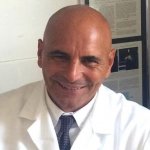
Advanced catheters
Smiths Medical launched a newly range of advanced embryo replacement catheters for in vitro fertilisation.

Smiths Medical launched a newly range of advanced embryo replacement catheters for in vitro fertilisation.

German medical technology firm Novalung GmbH (est. 2002) produces extracorporeal artificial lungs.

`Respiratory diseases are still a huge burden for our countries,´ Giovanni Viegi, President of the European Respiratory Society pointed out at the congress.

The ICNC meeting attracs a lot of attention since there is a focus on PET and CT.

Among the research articles published in this issue, are some ...

GE Healthcare and Volcano Corporation have combined GE's Innova digital X-ray cath lab system with Volcano's new PC-based IVUS platform.

To learn more about the presence of Philips in healthcare - and particularly cardiology - our Netherlands correspondent visited the company in Amsterdam.

Professor Raimung Erbel, of the West GErman Heart Centre Esse, Duisburg University Hospital aobut the hot topics of this years´congress.

PET/CT combines PET's ability to precisely measure regional myocardial blood flow with the capability of multislice CT imaging.
Positron emission tomography (PET) is a fancy tool for metabolic imaging. This week Tom Lewellen from the University of Washington Medical Center in Seattle takes a detailed look on what is to expect of the recent developments in PET detector technology.

The Kopernik Angio Centre, which opened last November in Lodz, Poland, is a five million euro turnkey project. In 1998, the radiology department at the Kopernik hospital needed modernisation, but the hospital's owner - the province of Lodz - could not afford such a large investment and, as a public institution, the hospital itself could not seek a financial loan. A way around the problem was…


Peter Bogner MD PhD describes current projects aimed at enhancing patient care in South-West Hungary.

By Professor Maximilian F Reiser, director of the Institute of Clinical Radiology at the University Clinic, Munich, Germany

MORTIS is a new teleradiology system which utilises high-resolution laptops to receive images for diagnostic purposes.


At the 11th International MR Symposium radiologists were urged to co-ordinate a campaign to detect disease earlier, and a new 'tandem' concept for diagnosis and therapy was revealed.

In an interview with Daniela Zimmermann, Executive Director of European Hospital, Dr Mohammad Naraghi, Head of the Department of Business Development at Siemens Medical Solutions, discussed developments in moleculary medicine, biochips, preventive diagnostics and a comprehensive and integrated health system for the future.

A report from the 2nd Telemedicine Forum, organised by Tele Medical Systems AG (TMS).

Daniela Zimmermann reports on the 2nd Hospital Administrator Forum.

By Stefan G Ruehm MD PhD, Associate Professor of Radiology, at the David Geffen School of Medicine, UCLA, California

Freezing abnormal electrical pathways in the hearts of young patients may be a safer alternative to zapping them with powerful radiofrequency probes to treat tachycardias and other arrhythmias, according to Dr Fabrizio Drago, of the Bambino Gesù Hospital, Rome. ‘If you have a child with a supraventricular tachycardia due to a re-entry circuit, or a target very close to the atrioventricular…

USA - Using positron emission tomography (PET) scanning rather than other types of imaging as the first tool to diagnose heart-vessel blockages is more accurate, less invasive and saves money, according to researchers reporting at the American College of Cardiology's Annual Scientific Session in March.

When it was suggested, during our interview with Dr Torsten Kuwert, Director and Professor of Clinical Nuclear Medicine, Clinic of Nuclear Medicine, at Friedrich-Alexander University Hospital, Erlangen, that SPECT-CT is the little sister of PET-CT, and that he might have preferred to install the ‘big brother’, Dr Kuwert pointed out the greater cost of PET, explaining: ‘The isotopes are more…

A short story about life with and without PACS - Part II - written at the Klinikum Krefeld, Germany and the Kantonssptial, Liestal, Switzerland.